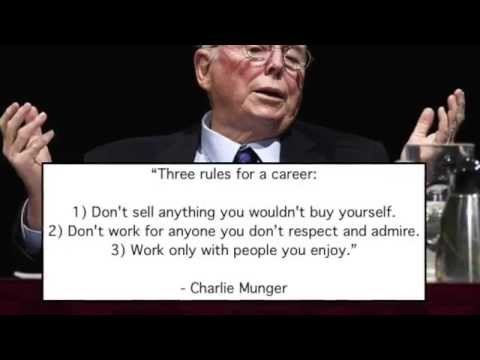Stryker PreAnnounces And Guides Lower So Let s Analyze It Using Our Free Cash Flow System
Post on: 5 Апрель, 2015 No Comment

Summary
- Why Stryker warned and guided lower.
- How the strong US dollar will cause many more companies to warn and pre-announce this quarter.
- I introduce additional parameters for my Scorecard system, specially formulated for the more aggressive and buy & hold investor.
Tuesday night while I was reading Seeking Alpha’s breaking news section, I saw this:
Jan 13 2015, 18:57 ET | About: Stryker Corporation (NYSE:SYK ) | By: Eric Jhonsa. SA News Editor
- Stryker (SYK ) expects to report Q4 EPS of $1.43-$1.45, below a $1.46 consensus. Net sales growth rose 6.1% (8.6% at constant currency) to $2.6B, below a $2.63B consensus.
- Orthopaedics sales rose 1.7%, MedSurg 12.1%, and Neurotechnology & Spine 3.9%. Organic sales growth was 5.5%. U.S. sales +11.1% to $1.8B; international -3.8% to $800M (+3.8% in constant currency).
- The medical device maker also says it now expects forex to have a $0.20 impact on 2015 EPS, worse than prior guidance of $0.10-$0.12.
- SYK -1.3% AH. Full Q4 results arrive after the close on Jan. 27.
The most important point in Stryker’s lowered guidance from Tuesday night was the impact to its earnings from its forex exposure, which came in at almost double what its previous guidance was. In many of my most recent articles here on Seeking Alpha, I warned about the impact that the strong US dollar will have on US Multinationals earnings, when they report this quarter.
It is my belief that the type of warning, which we received from Stryker Tuesday night, will be quite prevalent going forward as other companies report. Furthermore, I also believe that Wall Street analysts have not adequately incorporated this impact into their estimates. As a result we should have a lot of surprises to the downside as many more companies give similar pre-announcement warnings.
As the chart below clearly shows, the US dollar has risen +14.13% in just six months and this will have a paramount impact on the markets going forward, as there is no way that US Multinationals were able to properly hedge against such a rise in the US dollar. Most companies when putting in hedges, usually do so for a (plus or minus) 2-3% impact of forex, but it is almost impossible to properly hedge for a +14.13% rise of the US dollar in just 6 months.
In this article I will perform a historical free cash flow analysis of Stryker, for the years 1991-2015, using my Scorecard System. Once completed, this analysis should give everyone a clearer understanding on how accurate the valuation is (and has been) that Wall Street has assigned the company relative to its actual Main Street performance.
Here are the financial results for Stryker for the years 1991-2015
Since I am a conservative investor, I analyze companies using the last final print data from the previous year, which each company is required to report (10-K filing) to the SEC (Securities & Exchange Commission). Thus in the table above the market capitalization that you see for the year 1991 is from March 23rd of that year, while the other data listed is year-end 1990, as that is the data that would have actually been released by all firms by the March date. For investors that like to use forward estimates, I have also included the TTM (Trailing Twelve Months) data as well for 2015.
Before we show you the final results of our free cash flow analysis for Stryker. here is brief introduction to what each of the three ratios, which make up my system as well as what the final Scorecard score means.
CapFlow
CapFlow is the name I have given to the ratio (Capital Expenditures/Cash Flow). CapFlow allows us to see how much capital spending (or capital expenditures, CAPEX) a company must employ in relation to its cash flow to maintain itself and more importantly grow the company. This ratio is extremely useful as it is both a qualitative and quantitative ratio in that it acts as a laser beam into the inner workings of a company. Quite simply if a company is increasing its profits and doing so by spending less money relative to its growth in cash flow, it should, in theory, outperform on Main Street. When you can have such an occurrence for more than a few years in a row, it clearly shows you have wonderful management in place that knows what it is doing.
The ideal again is to consistently have a CapFlow of less than 33% and avoid any company, like the plague, that has a CapFlow of over 100%, as in such a case Management is spending more in capital expenditures than they are bringing in from cash flow from operations. That is a recipe for disaster in my opinion. Just using this ratio alone will narrow your list of potential candidates for investment substantially and will give you an easy to use tool for judging management effectiveness.
FROIC
FROIC = Free Cash Flow Return on Invested Capital
FROIC= Free cash flow/ (long term debt + shareholders equity)
FROIC basically tells us how much return in free cash flow a company generates for every one dollar of Total Capital it employs. I consider FROIC the primary determining factor in identifying growth companies as one can compare every company on an equal basis using this ratio.
The question I ask every company I analyze is:
How much return (in percent) in free cash flow are you going to give us for every dollar of total capital you invest?

A FROIC of 20% or more is considered excellent and the higher the result the better. Since long-term debt is included in the invested capital part of the equation, one can see quite clearly by using this ratio, on just how well or how poorly Management is managing its debt.
FREE CASH FLOW YIELD
Free Cash Flow Yield = Free Cash Flow per Share/ Market Price per Share
Free cash flow yield is the amount of free cash flow a company generates on Main Street divided by what Wall Street thinks the company is worth at any given moment. So basically once you learn this simple tool, you won’t care much what others think about a stock anymore as you yourself will have gone a long way in determining just how powerful a stock is relative to its stock market price and whether its stock price is justified, way overvalued or undervalued.
Having used the Free Cash Flow Yield a zillion times over the years I have come up with these conservative parameters for my own investing.
For the more Aggressive as well as the Buy & Hold investor, I would adjust everything down a notch and for example would make the hold from 2% to 5.9% and the buy from 6% to 9.9% and sell anything under 2%. As for shorting a stock that would be any result under zero, including any negative result. Here is a listing of those parameters for easy reference.
SCORECARD
Finally we come to the final score for any company under analysis and this is done by combining the three ratio final results into one analysis, we grade each company with either a passing score of 1 or a failing score of 0 per ratio where a perfect final score per stock would be a 3.
The ideal CapFlow results are anything less than 33%.
The ideal FROIC score is any result above 20%.
The ideal Free Cash Flow Yield is anything over 10%.
So in analyzing Apple (NASDAQ:AAPL ) for example, we get for TTM (trailing twelve months)
For the Conservative Investor:
CAPFLOW = 16.43% PASSED
FROIC = 35.50% PASSED
FREE CASH FLOW YIELD = 7.28% FAILED
SCORECARD SCORE = 2 (Out of possible 3)
For the Aggressive or Buy & Hold investor we get a Scorecard Score of 3 as Apple’s 7.28% free cash flow yield, would be classified as a buy.
So having now introduced the system to everyone, let us now examine Stryker’s Scorecard history from 1991-2015.
As the table above clearly shows, Stryker would have never been bought for the conservative portfolio, but in using our more aggressive parameters, the Aggressive or Buy & Hold investor would have had two wonderful opportunities to buy it, making a lot of money on both occasions. In 1997 such an investor would have made a +72.99% profit, before having to sell it just one year later. Then in 2009 that same investor would have had another opportunity to come in and buy it resulting in a +175.30% profit up until today, as it would have never been sold.
What we are trying to avoid from the Conservative investors point of view is the -55.15% loss that Stryker’s stock price had from 2008-2009. The Buy and Hold or Aggressive investor would have just grinned his teeth and bought more on the way down as in most cases these investors still have income coming in. The Conservative investor on the other hand, is probably retired and thus cannot afford to take such risks as he (in most cases) has no income coming in. So if one decides to use my Scorecard system, it is best to first determine what kind of investor you are beforehand and what your risk tolerance is. Going into 2015 Stryker is a Hold for the Aggressive/Buy & Hold investor and a Sell for the Conservative investor.
Disclosure: The author has no positions in any stocks mentioned, and no plans to initiate any positions within the next 72 hours. (More. ) The author wrote this article themselves, and it expresses their own opinions. The author is not receiving compensation for it (other than from Seeking Alpha). The author has no business relationship with any company whose stock is mentioned in this article.














